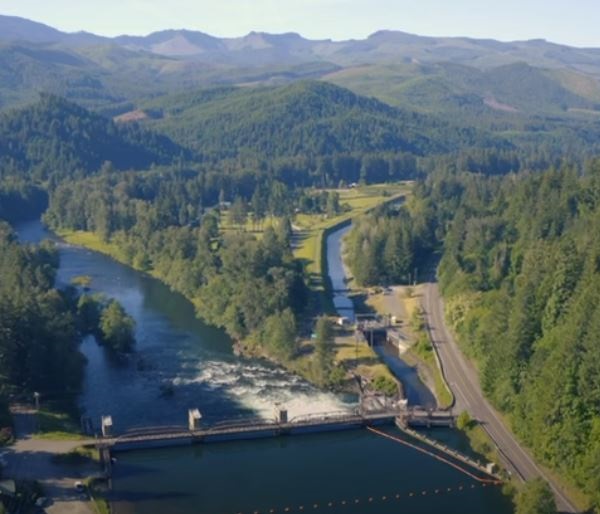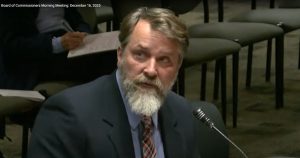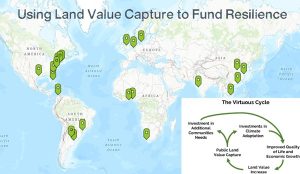Opinion: Remove the Leaburg Dam
3 min read
by Jackson Kellogg
The McKenzie River is one of the most beautiful rivers in Oregon. I visit the river frequently and I am always thrilled to see the swift cool water rushing past. Seeing the slow, stagnant water behind the Leaburg Dam is sad. I have long hoped that the Leaburg Dam would be removed and the McKenzie River returned to a more natural state.
According to the Dec. 6 board meeting materials, EWEB General Manager Frank Lawson is scheduled to present these six recommendations, which the Board can consider and share with interested parties, including community groups:
- Management’s recommendation is to permanently discontinue electricity generation at the Leaburg Hydroelectric Project; Leaburg ceased generating electricity in 2018. However, if this recommended decommissioning becomes further economically challenged as design and implementation begins, the cost premium to facilitate generation should be reexamined and could be cause for reconsideration of long-term generation.
- With the decommissioning of the Leaburg Hydroelectric Facility, Leaburg Dam should, and will likely be required to, be removed returning the McKenzie River to unobstructed flow in the bypass reach impacted by the hydroelectric facilities. Removing the dam eliminates EWEB’s long-term obligation and liability, as well as is a likely regulatory outcome.
- The dam’s removal warrants alternative access development at the east end of the project boundary, south of the river. Because of cost and ongoing obligations and liability, Management is not recommending EWEB construct a new bridge to replace the dam’s role as cross-river transport, but rather utilization of the Goodpasture Bridge and road improvements.
- Initially, canal infrastructure should be repaired and used to channel intersecting side stream flows, including storm water, for conveyance to the river as the most practical alternative, still preserving the option to incrementally return a portion or the entire project, including canal, to pre-project conditions.
- EWEB should work specifically to mitigate water rights and water access issues where legally obligated and facilitate water access where possible specifically for fish hatcheries.
- Before 2030, a similar triple-bottom-line analysis should be completed to inform potential directional decisions (relicense or decommission) associated with the Walterville project.
The management recommendation notes positive impacts from dam removal: “Permanently discontinuing electricity generation at the Leaburg Hydroelectric Project will result in the removal of the dam, restoring the McKenzie River to unobstructed flow and eliminating the human-made Leaburg Lake behind the dam. This will have a positive impact on water quality, fish and wildlife. Lakeside recreation facilities will shift to riverside recreation facilities for the decommissioning alternatives and trails will need to be re-configured for all altered reaches of the canal. Lakeside residences will become riverside residences.”
I care about the Willamette watershed and think it is time for the dam to be removed.
- Currently the Leaburg Dam does not generate electricity.
- Both the Leaburg Dam and the Leaburg Canal will need costly repairs to be made operational.
- The state will not allow the dam to remain in the river if it is not generating electricity.
- The dam kills about 5% of migrating fish.
- The small amount of electricity that could be generated does not justify the massive expense of the needed repairs or the continuing environmental damage caused by the dam.
The Leaburg Dam discussion at the Dec. 6 board meeting is scheduled to begin at 7:30 p.m. Please join me in encouraging our EWEB board members to support removal of the Leaburg Dam.
Jackson Kellogg is chair of the Cal Young Neighborhood Association and chair of the Neighborhood Leaders Council.






